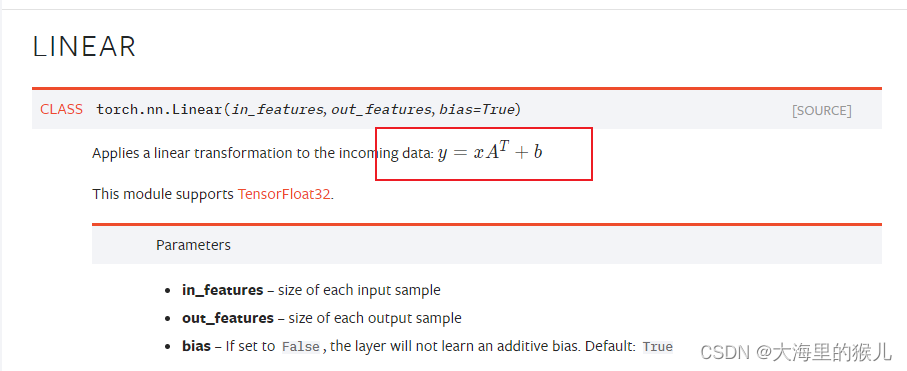自注意力机制学习有感
- 观看b站博主的讲解视频以及跟着他的pytorch代码实现mindspore的自注意力机制:
- up主讲的很好,推荐入门自注意力机制。
import mindspore as ms
import mindspore.nn as nn
from mindspore import Parameter
from mindspore import context
context.set_context(device_target='Ascend',max_device_memory='1GB')
class SelfAttention(nn.Cell):
def __init__(self, dim):
super(SelfAttention, self).__init__()
wq_data = [[1.0, 0], [1., 1.]] # wq权重初始化 超参数
wk_data = [[0., 1.], [1., 1.]] # wk权重初始化 超参数
wv_data = [[0., 1., 1.], [1., 0., 0.]] # wv权重初始化 超参数
self.q = nn.Dense(in_channels=dim, out_channels=2, has_bias=False)
self.q.weight.set_data(ms.Tensor(wq_data).T)
print("wq value:", self.q.weight.value())
self.k = nn.Dense(in_channels = dim, out_channels=2, has_bias=False)
self.k.weight.set_data(ms.Tensor(wk_data).T)
print('wk value:', self.k.weight.value())
self.v = nn.Dense(in_channels=dim, out_channels=3, has_bias=False)
# print(self.v.weight.shape)
self.v.weight.set_data(ms.Tensor(wv_data).T)
print('wv value:',self.v.weight.value())
print("*********************" * 2)
def construct(self, x):
q = self.q(x)
print('q value:', q)
k = self.k(x)
print('k value:', k)
v = self.v(x)
# xx = x.matmul(ms.Tensor([[0., 1., 1.], [1., 0., 0.]]))
print('v value:', v, '\n')
print('#################################')
x = (q @ k.T)/ms.ops.sqrt(ms.tensor(2.))
x = ms.ops.softmax(x) @ v
print("result:", x)
x = [[1., 1.],[1,0],[2,1],[0, 2.]]
x = ms.Tensor(x)
attn = SelfAttention(2)
attn(x)
结果如下:
wq value: [[1. 1.]
[0. 1.]]
wk value: [[0. 1.]
[1. 1.]]
wv value: [[0. 1.]
[1. 0.]
[1. 0.]]
******************************************
q value: [[2. 1.]
[1. 0.]
[3. 1.]
[2. 2.]]
k value: [[1. 2.]
[0. 1.]
[1. 3.]
[2. 2.]]
v value: [[1. 1. 1.]
[0. 1. 1.]
[1. 2. 2.]
[2. 0. 0.]]
#################################
result: [[1.5499581 0.71284014 0.71284014]
[1.3395231 0.7726004 0.7726004 ]
[1.7247156 0.4475609 0.4475609 ]
[1.4366053 1. 1. ]]
** 吐槽mindspore说明文档,对ms.nn.Dense的说明太过简单了,有对新手真不友好(对我) **
- pytorch的文档:

- mindspore的文档:

pytorch有公式,至少提示A的转置有提示。mindspore没有,导致我这步实现的时候输出的结果不对,还是希望mindspore说明问昂也把公式写清楚点。其实mindspore的Dense和pytorch的Linear的公式实现是一样的。
附上pytorch的实现:
#@title Default title text
import torch
import torch_npu
import torch.nn as nn
class Self_Attention(torch.nn.Module):
def __init__(self, dim):
super(Self_Attention, self).__init__() # 其中qkv代表构建好训练好的wq,wk,wv的权重参数;
self.scale = 2 ** -0.5
self.q = torch.nn.Linear(dim, 2, bias=False)
q_list = [[1., 0.],[1., 1.]]
self.q.weight.data = torch.Tensor(q_list).T
print('q value:', self.q.weight.data)
self.k = nn.Linear(dim, 2, bias=False)
k_list = [[0., 1.], [1., 1.]]
self.k.weight.data = torch.Tensor(k_list).T
print('k value:', self.k.weight.data)
self.v = nn.Linear(dim,3,bias=False)
v_list = [[0., 1., 1.],[1., 0., 0.]]
# print("origin shape:", self.v.weight.data.shape)
self.v.weight.data = torch.Tensor(v_list).T
print('init shape:',self.v.weight.data)
def forward(self, x):
q = self.q(x) # 通过训练好的参数生成q参数
print("q:", q)
k = self.k(x)
print("k:", k)
v = self.v(x)
print("v shape:", v.shape)
# Att公式
attn = (q.matmul(k.T)) / torch.sqrt(torch.tensor(2.0))
print("attn1:", attn)
# attn = (q @ k.transpose(-2, -1)) / torch.sqrt(torch.tensor(2.0))
# print("attn11:", attn)
# attn = (q @ k.transpose(-2, -1)) * self.scale
# print("attn2:", attn)
attn = attn.softmax(dim=-1)
print("softmax attn:", attn)
# print(attn.shape) # shape[4,4]
x = attn @ v
print(x.shape) #shape[4,3]
return x
x = [[1., 1.],[1,0],[2,1],[0, 2.]]
x = torch.Tensor(x)
att = Self_Attention(2)
att(x)





















 2089
2089











 被折叠的 条评论
为什么被折叠?
被折叠的 条评论
为什么被折叠?








